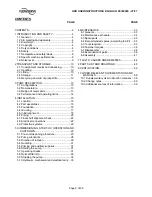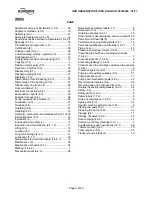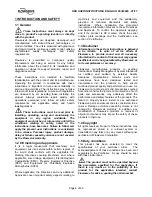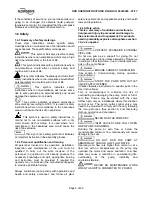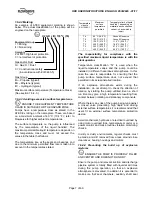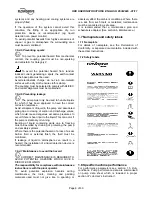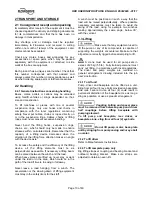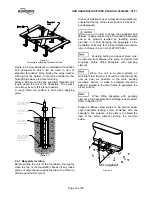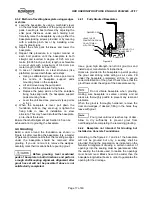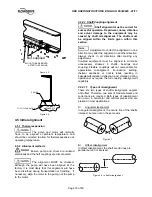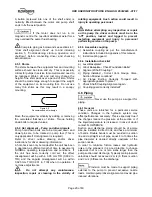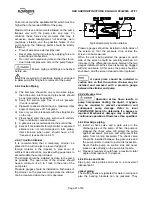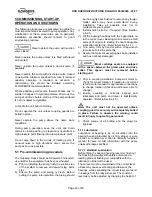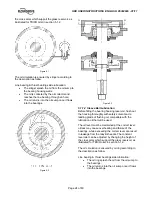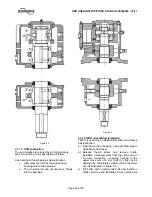
HDX USER INSTRUCTIONS ENGLISH 85392696 - 01/11
Page 10 of 60
2 TRANSPORT AND STORAGE
2.1 Consignment receipt and unpacking
Immediately after receipt of the equipment it must be
checked against the delivery and shipping documents
for its completeness and that there has been no
damage in transportation.
Any shortage and or damage must be reported
immediately to Flowserve and received in writing
within one month of receipt of the equipment. Later
claims cannot be accepted.
Check any crates, boxes and wrappings for any
accessories or spare parts which may be packed
separately with the equipment or attached to side
walls of the box or equipment.
Each product has a unique serial number. Check that
this number corresponds with that advised and
always quotes this number in correspondence as well
as when ordering spare parts or further accessories.
2.2 Handling
2.2.1 General instructions concerning handling
Boxes, crates, pallets or cartons may be unloaded
using forklift vehicles or slings dependent on their
size and construction.
To lift machines or pieces with one or several
suspension rings, only use hooks and chains in
compliance with the local regulations concerning
safety. Never put cables, chains or ropes directly on
or in the suspension rings. Cables, chains or lifting
ropes must never present excessive bending.
Never bend the lifting hooks, suspension rings,
chains, etc., which should only be made to endure
stresses within, calculated limits. Remember that the
capacity of a lifting device decreases when the
direction of the lifting force direction makes an angle
with the device axis.
To increase the safety and the efficiency of the lifting
device, all the lifting elements must be as
perpendicular as possible. If necessary a lifting beam
can be placed between the winch and the load.
When heavy pieces are lifted up, never stay or work
under the load or in the area, which could be in the
path of the load if it were to swing or fall away.
Never leave a load hanging from a winch. The
acceleration or the slowing-down of lifting equipment
must stay in the safety limits for the staff.
A winch must be positioned in such a way that the
load will be raised perpendicularly. Where possible
necessary precautions must be taken to avoid the
swing of the load, using for example two winches
making approximately the same angle, below 30°,
with the vertical.
2.3 Lifting
Make sure that any equipment used to
lift the pump or any of its components is capable of
supporting the weights encountered. Make sure that
all parts are correctly rigged before attempting to lift.
A crane must be used for all pump sets in
excess of 25 kg (55 lb). Fully trained personnel must
carry out lifting, in accordance with local regulations.
The driver and pump weights are recorded on
general arrangement drawing included into the job
user’s instruction.
2.3.1 To Lift unit
Pump, driver and baseplate can be lifted as a unit.
Sling from all four (4) eye bolts provided on baseplate
side rails. Failure to use all four (4) could result in
permanent distortion of the baseplate. Use as long a
sling as possible, or use a spreader arrangement.
Coupling bolting and spacer piece
must be removed from between pump and driver
half couplings before lifting baseplate with
pumping element.
To lift pump and baseplate, less driver, or
baseplate alone, sling from all four (4) eye bolts.
Do not lift pump, motor, base plate
unit by slinging from pump casing and/or eye bolt
on motor.
2.3.2 To lift driver
Refer to Manufacturers Instructions.
2.3.3 To lift complete pump only
Rig lifting straps at coupling end bearing bracket and
outboard bearing bracket. Make sure straps are
adjusted to obtain an even lift.


